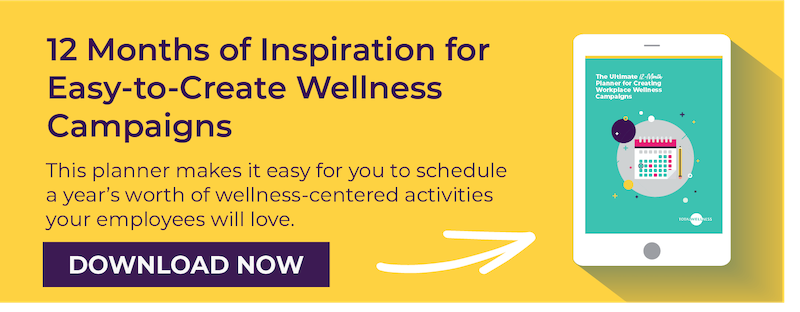 April is National Donate Life Month.
April is National Donate Life Month.
If you’ve gone to the DMV for a driver’s license renewal, you may have been asked if you want to be an organ donor. By checking that little box to say yes, you give permission for your organs to be given to a living person upon your death.
While 95% of Americans support being a donor, only 58% are registered, according to the nonprofit Donate Life America. Your driver’s license is just one way to do that.
For employers, National Donate Life Month is an ideal time to discuss a variety of topics — not just organ donation registration. Your benefits department can also bring up discussions that often get pushed aside, like estate planning, medical directives, and end-of-life wishes.
If your company offers legal services, now is the time to promote them. Alongside that, you can share resources with employees on both living and deceased organ donation options.
Here’s how you can share more insight into this sensitive yet important topic:
What is National Donate Life Month?
Every April, National Donate Life Month (NDLM) is recognized by Donate Life America, a nonprofit focused on encouraging the public to sign up for their state’s organ donor registry.
The observance celebrates regional, local, and national activities to promote organ donor sign-ups. It’s a time to raise awareness about those dealing with organ failures like Chronic Kidney Disease and what can be done to help those individuals.
It’s also the time for employees to consider working with an estate planning lawyer if they haven’t done so. Laying out end-of-life wishes and plans makes it easier for the family when tough medical decisions need to be made.
It’s not an easy or comfortable topic by any means, but it’s an important one to have inside and outside the workplace.
Who Can Become an Organ Donor?
Anyone who wishes to be an organ donor generally has to be 18 or older. Whether organs are accepted or not is decided at the time of death for the most commonly known deceased donation.
The human body has eight different organs that can be donated, including:
- Heart
- Pancreas
- Kidneys (2)
- Liver
- Lungs (2)
- Intestines
There are different types of organ donation opportunities as well:
- Living donation - This is a way to save someone’s life while you are still living. Certain organs — like the kidneys — can be donated when there’s a shortage of deceased donors. Most healthy people can function with just one kidney. You don’t need to be related to a recipient, either, to donate.
- Deceased donation - This is the type that you give the okay for on your driver’s license. Once you have passed away, your organs may be transplanted into someone else. Only after all life-saving procedures have been tried — and the patient is declared brain dead — is donation an option.
- Vascularized Composite Allografts (VCAs) - These transplants include bone, skin, muscles, blood vessels, connective tissue, and nerves. Most commonly, these are done for hand or face transplants for those who have dealt with a major illness or injury. This does require a separate authorization from the standard donation procedures.
- Pediatric donation - Little ones need donations, too. As of today, 2,000 kids under 18 are waiting for transplants. Most pediatric patients respond best to child-sized organs.
Organ Donation Statistics to Share With Employees
For those who are signed up as donors, it’s a gift of life that is given to others in the event of death. Unfortunately, organ donor waitlists are long as individuals wait for a new heart, lungs, pancreas, liver, intestines, or kidneys.
Consider sharing these statistics in a newsletter, email, or bulletin board with your employees during National Donate Life Month:
- Every 10 minutes, a person is added to the organ donor list
- Donated body tissue can heal up to 75 recipients
- 22 people die daily because they don’t get an organ in time
- Only 3 out of 1,000 people die in a way that allows for donation
- More than 113,000 people are waiting for an organ donation
This infographic perfectly details fast facts about organ donation and FAQs for people who are considering a donation. During the month of April, post these infographic posters around your office to pique curiosity.
How Employers Can Participate in National Donate Life Month
Death is a tricky subject to handle, but especially in the workplace. But it’s important to note that while most organ donations do occur after a death, some other transplants are possible while the donor is living — like the transplant of a kidney or part of a liver.
If you want to broach the subject in the workplace, it can be done. Both organdonor.gov and Donate Life America have excellent resources you can share with your employees if you don’t wish to do a formal presentation.
Here are a few other ways to get involved:
- Promote donation - Share local and national resources with your employees. Have fliers on hand and consider hanging some bulletins up around the office.
- Host a recipient - Connect with a local organ transplant recipient to see if they’d be willing to share their story with your employees during a lunch and learn event.
- Bring in an estate planning lawyer - Host a local estate planning attorney to discuss living wills, advanced directives, and end-of-life wishes. This can help your employees learn how to broach the subject with family and better understand how to tackle these necessary documents.
- Share life stories - Every day, people receive organ donations that change their lives. Email your employees the personal stories of advocates, donors, and recipients to showcase how lives are changed with organ donation.
- Discuss registration - It’s good for employees who wish to be donors to have it on their driver’s license, but a license isn’t necessarily with them if they pass away. Show your team how and where to register online with your state, if needed.
- Talk about time off - If an employee will be a living donor, they’ll need time off of work. Highlight your company policy and share it with your employees so they can plan accordingly if they’re planning to go through surgery for donation.
If your company isn’t interested in promoting organ donation, blood donation is another option to consider. Blood donations are needed daily for transfusions for ill patients, car accident victims, and others with life-threatening conditions. A blood donation is a great way to give “life” in a smaller commitment than organ donation. Consider bringing a bloodmobile on-site to make it easy for your employees to donate.
No matter how your company participates in National Donate Life Month, even a single commitment from a team member could change someone else’s life for the better.
How will your company honor National Donate Life Month? Let us know in the comments below!



